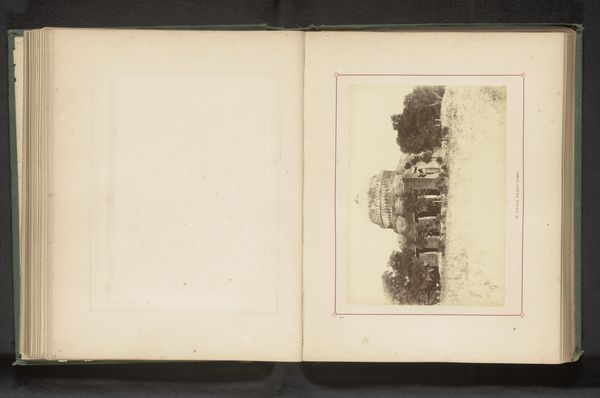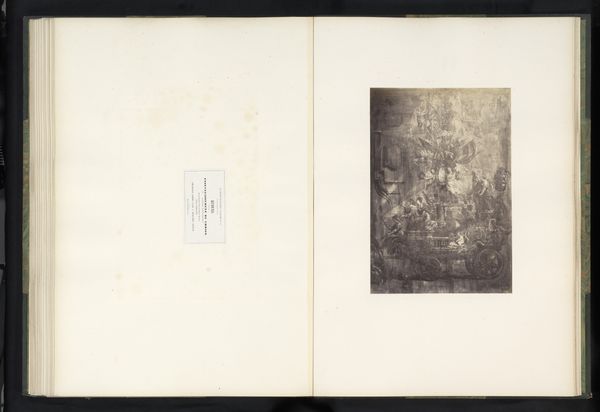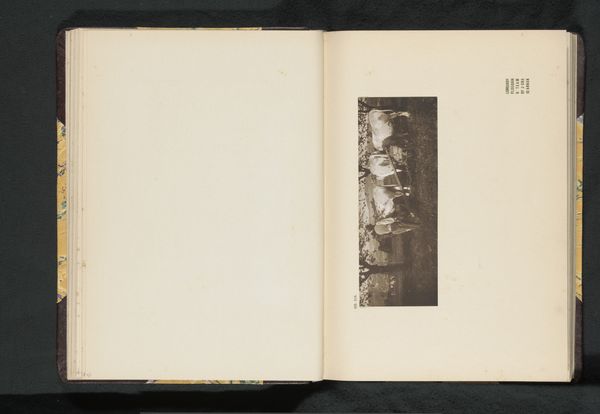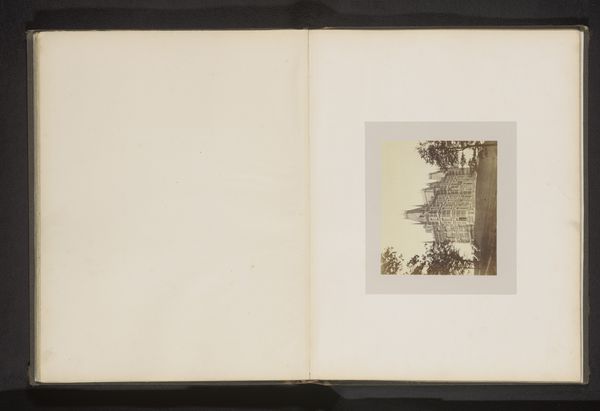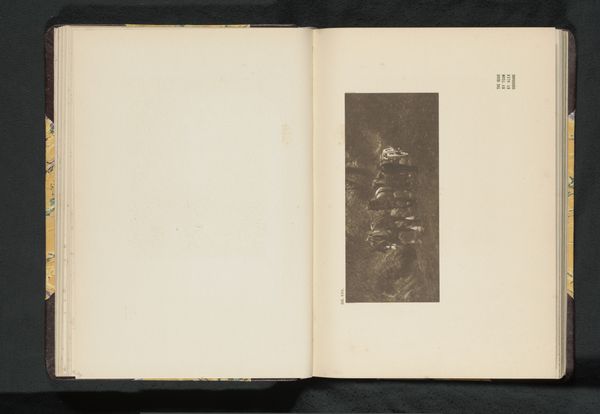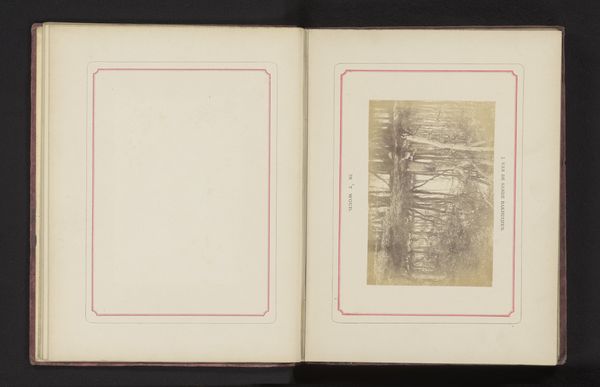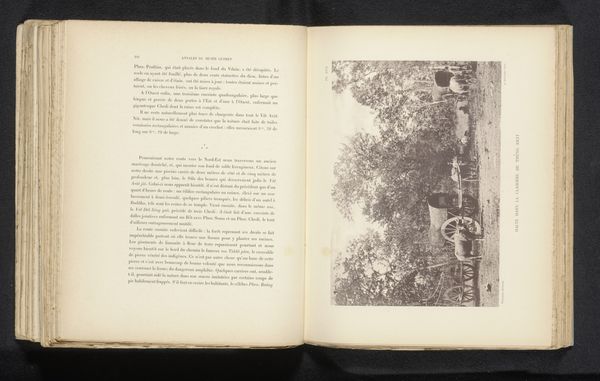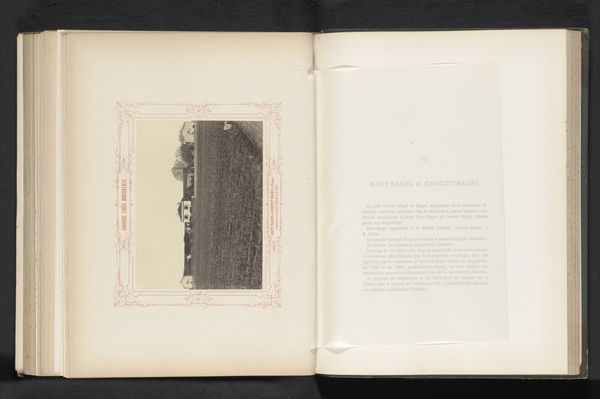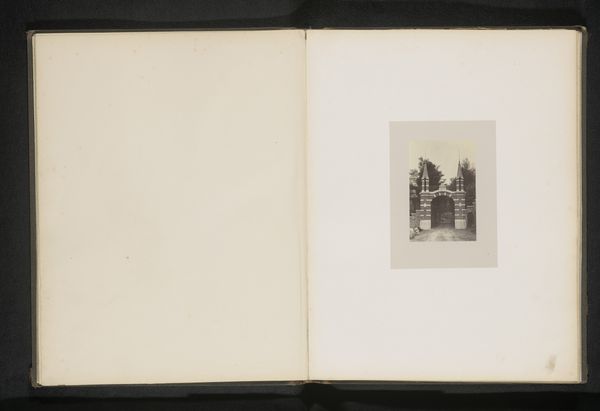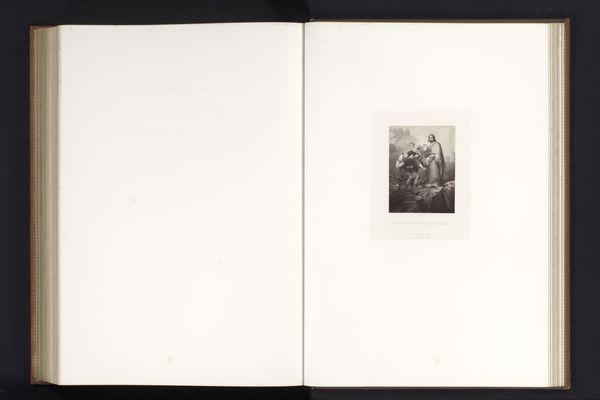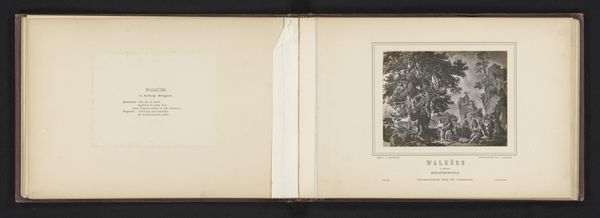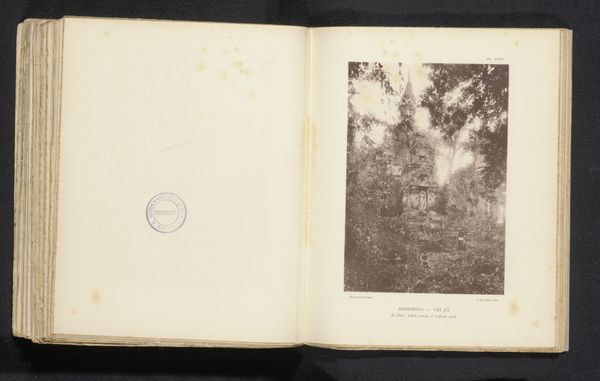
drawing, print, paper
#
drawing
# print
#
landscape
#
paper
Dimensions: height 144 mm, width 215 mm
Copyright: Rijks Museum: Open Domain
Curator: Looking at this page spread, we see an image entitled "Een tempel in het bos," which translates to "A Temple in the Forest." It is listed as created before 1895, and its materials include drawing and print on paper. It offers a serene landscape, printed within the pages of this book. Editor: The composition certainly evokes a quiet solemnity. The darkness of the ink creates an almost somber mood, contrasting the romantic, idealized landscape. I find myself thinking about the way landscapes of this era were often deployed to reinforce national identity. Curator: Right, the printmaking process is interesting here. How the artist chooses to render the tonal values through the layering of lines directly affects how the eye perceives space and depth. We also must acknowledge the impact of the mass production, to render many copies with ease and to circulate. Editor: Absolutely, it's essential to contextualize its role as a printed reproduction and how such images reinforced an ideology, in the case the artist offers a perspective from what was considered ‘exotic’ lands through printmaking, to wider audiences. And what are the implications of that? Curator: Thinking of the materials, the very paper is itself a product of labor and global trade networks—something frequently overlooked. It speaks of the movement of raw resources transformed through industry to create cultural objects. The paper and printing were becoming increasingly inexpensive, the question of why someone buys this copy rather than any other is interesting, too. Editor: Yes, we see a complex interplay. On the one hand, this printed image makes a scene accessible to a wide audience, potentially shaping their understanding. On the other hand, this idealized depiction may eclipse the lived experiences of the land's inhabitants at the time, the complex ecological relations in such lands as the water runs from an artificially looking fountain/canal. The ‘exoticization’ comes as such images circulate among Europe. Curator: By examining the paper, the printing process, we understand its manufacture, distribution, and its consumption. This all provides a wider understanding beyond just artistic expression and more for an exercise in social construction of ideas. Editor: Considering it today offers an opportunity to recognize that even seemingly idyllic depictions hold inherent biases. Analyzing art with this lens pushes for greater critical awareness about how landscapes participate in culture wars and environmental awareness, which in turn will inform a broader social and environmental understanding. Curator: Absolutely. This print on paper reveals not only an artist's vision but also the labor, materiality, and networks through which such visions become socially impactful artifacts. Editor: Indeed, thinking critically about art encourages critical thinking in society too, about power and place.
Comments
No comments
Be the first to comment and join the conversation on the ultimate creative platform.
